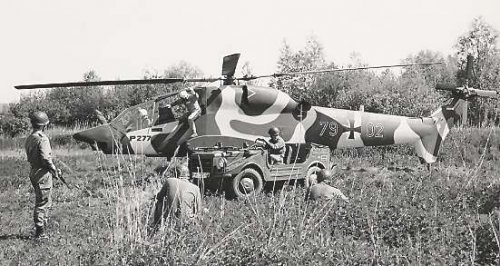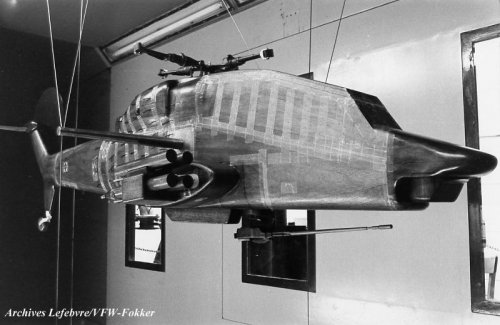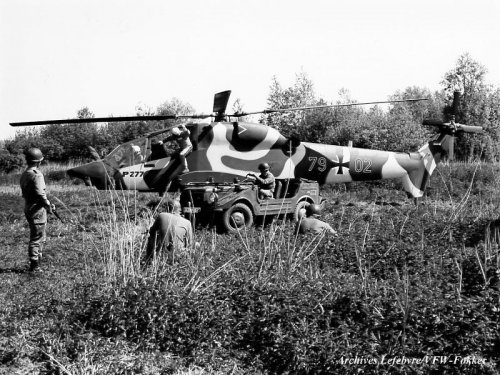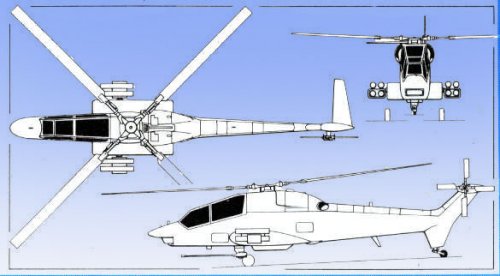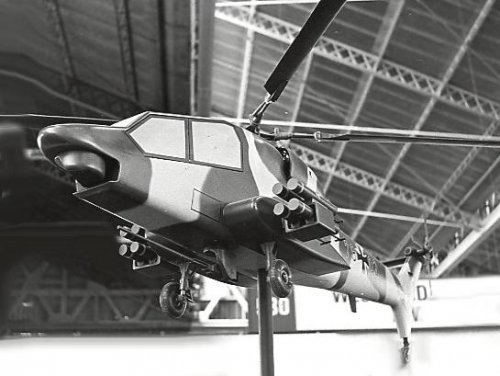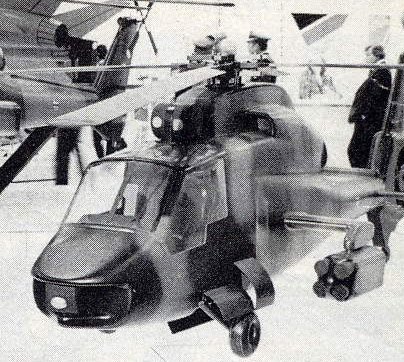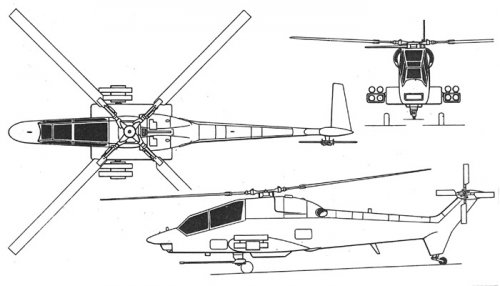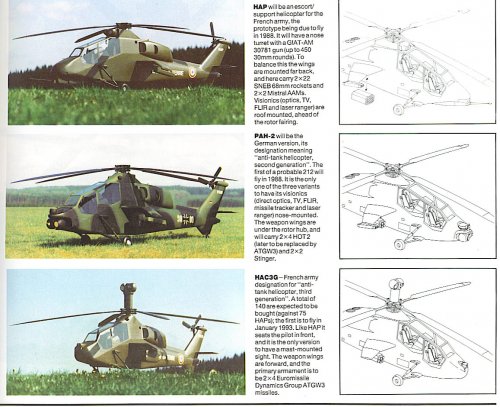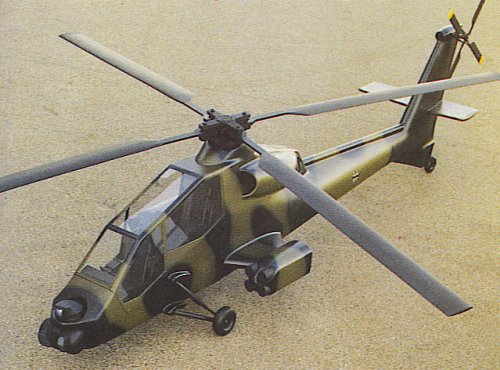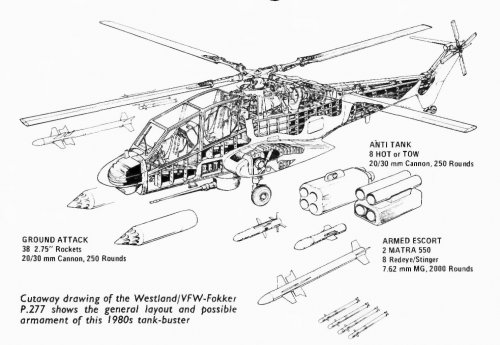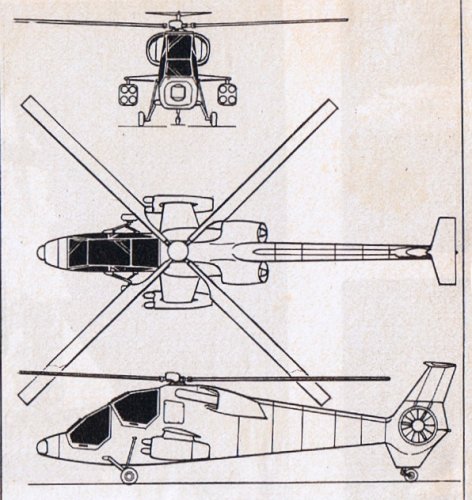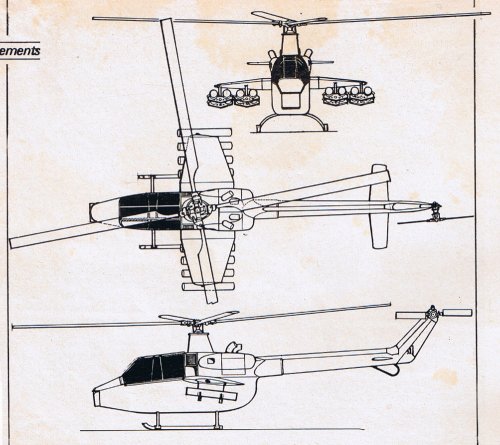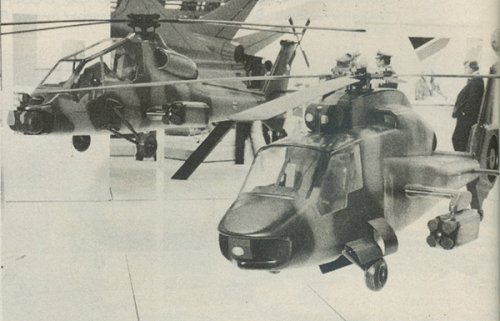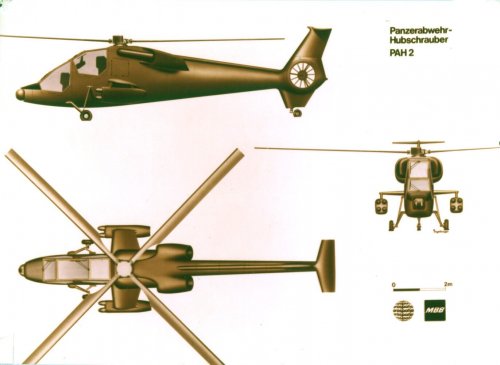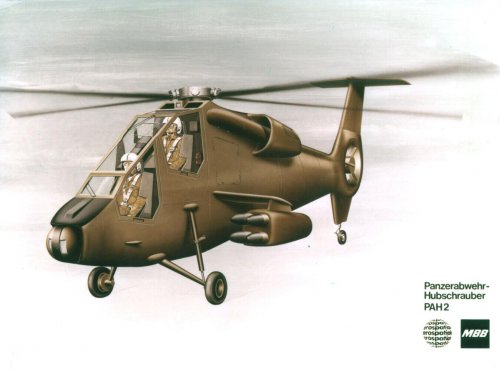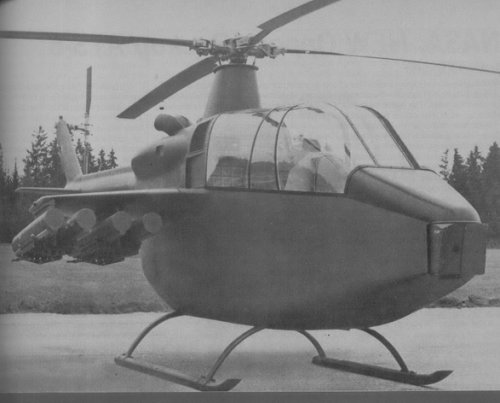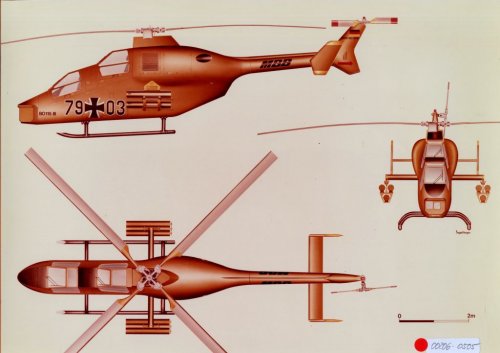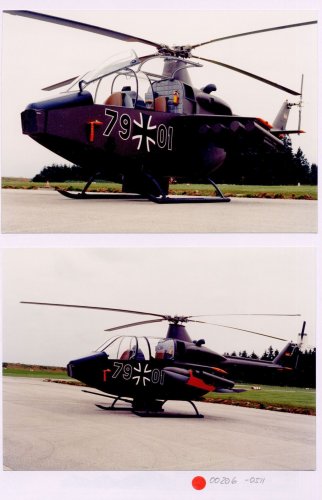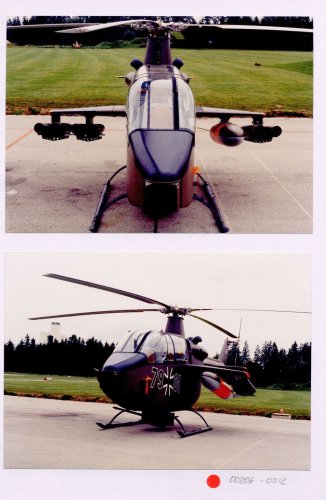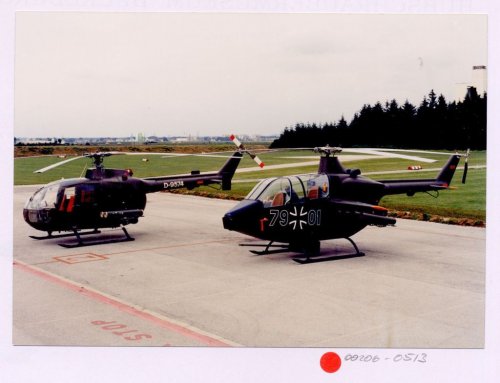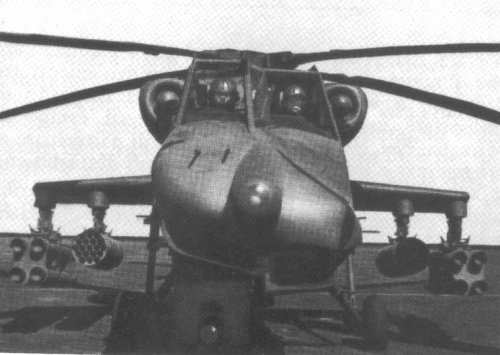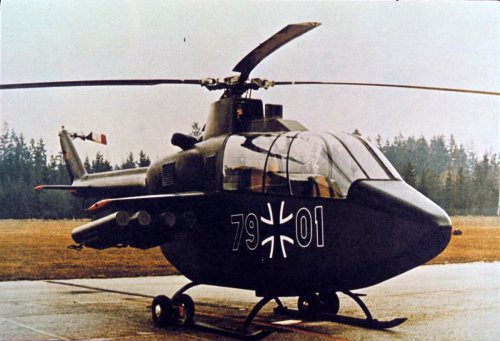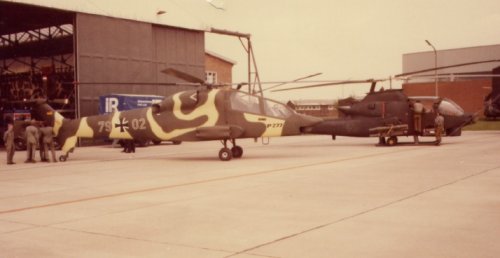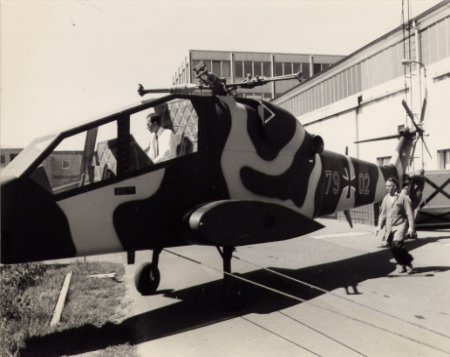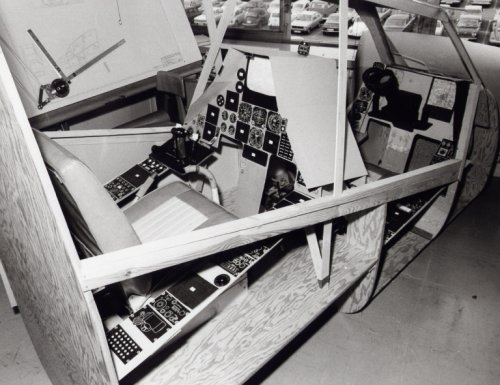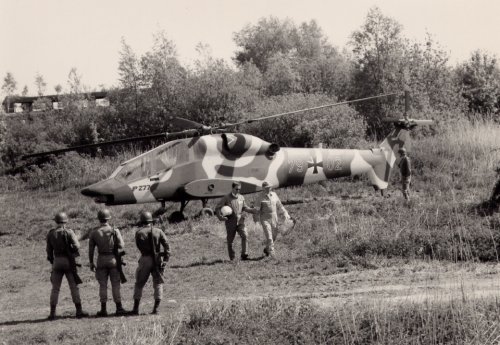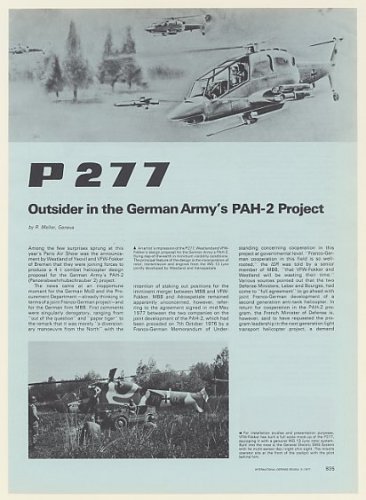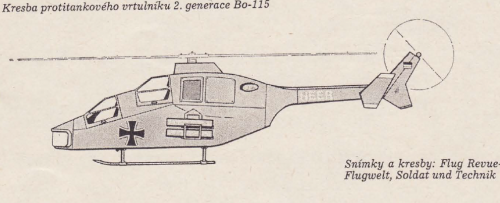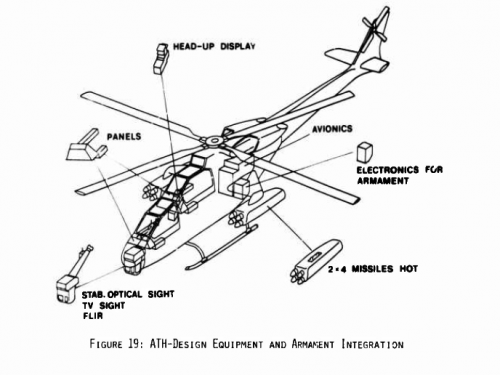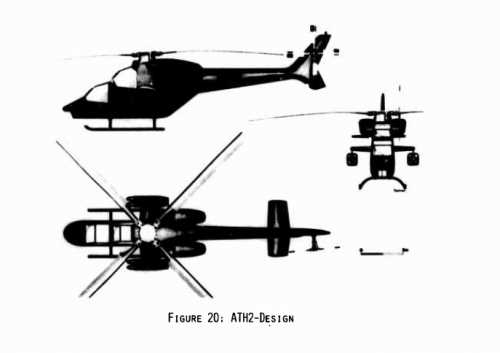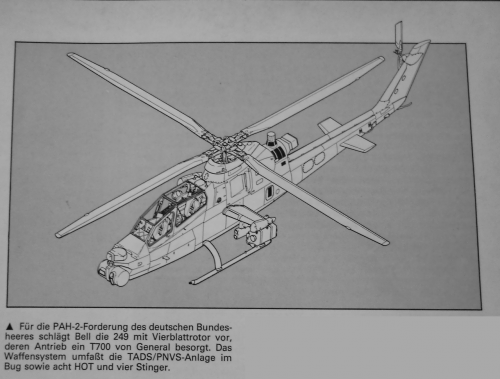- Joined
- 27 December 2005
- Messages
- 17,748
- Reaction score
- 26,421
New PAH II entry: VFW Fokker/Westland Helicopters P277
One of the large surprises air show 1977 in Le Bourget/Paris was common the model debut from VFW Fokker and Westland of the Helicopters and in all silence of developed combat helicopter P 277 'Fleidermaus' (Bat). With this sample it concerns a project suggestion on the fulfilment of the tactical demand of the Federal Republic of Germany on a helicopter laid out for antitank defense. Certainly thereby the development of the PAH II steps into a completely new phase.
In May/June 1977 became known the procurement of 212 machines of the antitank defense helicopter of the 1. Generation (PAH I) green light gives. With this sample it acts around a derivative out of the Bo 105M, by which for February 1976 two machines are extensively tested. Numerous studies resulted in that with appropriate weapons of equipped Bo 105M can fulfill the demands on the PAH 1. In addition also attempts with an inserted mg 3 belonged in swiveling carriage and a sechsläufigen mini act of Emerson Electric at the fuselage lower side. Also the usefulness of the 20-mm cannon RH 202 of Rhine metal was examined.
Although all of this led to excellent results, one decided in the long run for the equipment of the PAH I with six antitank defense missiles of the German of French type HOT (High Optical tube) in three-foldwho far from. These 260 m/s fast and 32 kg heavy weapon equipped with folding wings an employment use of 75 to 4000 M. with six HOT armed Bo 105P has comes including the complete visor equipment on a takeoff weight of 2400 kg. With the PAH I the army aviators are finite starting from at the end of of 1979 in case of an armed conflict able to be able to fight solid tank break-throughs more effectively than ever before. Everyone of the three corps will receive additionally an antitank defense regiment (PAR) with 56 Bo 105P.
But back to the antitank defense helicopter of the 2. Generation, whose development with the decision stepped over the troop introduction of the PAH I into a new concrete phase. To the principal claims of the German army aviators to the new sample belong not only more efficient weapons, but above all the night operations and bad weather fitness. Only well-known forerunner for the new PAH system, which was to be realized to European joint venture work and be introduced in the second half of the eighties, was to June 1977 the draft Bo 115 prepared by MBB. It was not amazing thus that the project of the P developed together by VFW Fokker and Westland knocked 277 into Le Bourget themselves with numerous specialists like a bomb.
Both companies worked in the last two years and in all silence on the draft of the new combat helicopter, which in the weight class around 4500 kg ranked and outwardly a little reminds of the American sample Bell Huey Cobra. Not only from time, but in particular from cost reasons one already took Westland as a basis Lynx, which fulfills the operational demands of the PAH II fully in the initial phase the complete dynamic system of the light multi-purpose helicopter.
The power plant of the P 277 consists of two 960-WPS-Turbinen of the type of Rolls-Royce IN ACCORDANCE WITH 4, which make a maximum speed of 290 km/h and a maximum rate of climb of 13,4 m/s at ground level for it possible. This also shaft turbine marked with RB.360 worked satisfactorily until today with the Lynx outstanding. It is characterized by a small fuel consumption and is very fast-reacting. The rotor system of the P 277 consists as with the Lynx of a hingeless four-sheet main rotor with a diameter of 12,80 m and a likewise four-leaf tail rotor, whose diameter is with 2,21 m.
For the security of the calculated flight performances served VFW Fokker a P 277-Modell, which was examined in the context of a 75stündigen of program and in the most diverse configurations in the wind tunnel. In addition among other things also the influence of the cannon and the Visiereinrichtung belonged apart from the trunk base data and the pressure distribution around the front and middle trunk. The unloaded weight of the P 277 is with 2460 kg and the maximum takeoff weight with 4760 kg.
The two master units of the tail landing gear chassis are retractable into lateral trunk cars. As is the case for some other helicopter samples the zweiköpfige crew is easily graduated accommodated in a tandem cockpit. Both seats are armored like all vital systems of the equipment and engine installation.
As tasks of main employment of the P 277 the fight of armored ground targets as well as the battlefield support are considered with solid tank break-throughs. Beyond that it is to be in addition, able to suppress opposing soil fire and to accompany and protect if necessary heavy transport helicopters with their employments. For all these tasks the P can carry 277 different weapons of the most modern conception, to which beside, to a fuselage-side 20-mm cannon with 250 in particular two four-fold throwers for HOT or TOW missiles belong to shot. For low attacks however also two throwers with 38 2.75 can " instead of its - rockets and for armed escort-in-corrode two air-to-air guided weapons Matra 550 or Redeye to be carried.
All this, the proven dynamic system of the Lynx as well as a durable cell and equipment with small maintenance need, make the P 277 a combat helicopter with high readiness of application. It corresponds not only to the tactical demands of the army aviators for the PAH II, but also the political conceptions as international community project. Because of the mentioned assumption of the Lynx Rotorsystems and the associated Verkürzung of development time and - the P 277 costs at the beginning of the eighties of the troop with its realization be supplied around half could. The combat helicopter P 277 represents without any doubt a further contribution to the standardization of weapons and equipment within NATO.
Beyond that the development of a modern PAH, on which also the Aerospatiale (France) and Agusta (Italy) work, was completely again animated by the debut of the P 277. One should further pursue it in the next years with largest interest.
The airmobileness of the army will be again crucially improved by the PAH II - it is now the Bo 115 or the P 277 -. The arsenal of the army for the effective fight of armored vehicles will be considerable in the eighties. It is enough then from the Panzerfaust over guided missiles of different ranges up to own hunt and battle tanks as well as with appropriate weapons to equipped combat helicopters of most modern conception. Hans's Redemann
Translated from
PS: small edit made by Deino as the German name for that helicopter was not "Fleidermaus" but only "Fledermaus" without an "i" meaning "bat" !!

